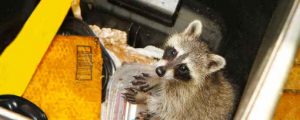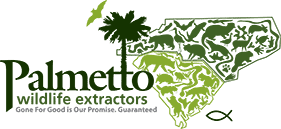Wild animals that live near or around your property have the capability of becoming a nuisance. In most instances, these creatures will not threaten your health or impact your safety; however, in some cases, they may find their way onto your property or home and cause a certain degree of mischief, chaos, and/or damage.
This is why it is imperative that you take the steps that are necessary to wildlife-proof your property. In this guide, you will be provided with a few simple steps to help with this task.
The Outdoor Area Surrounding Your Home
The first place to start when wildlife-proofing your property the outdoor area surrounding your home.
First and foremost, ensure that all debris – be it natural or manmade – is eliminated from your lawn. This includes piles of wood and leaves, garbage, compost, containers that hold water, and items that are similar in nature.
In terms of plant life – be it trees, shrubs, bushes, or flowering plants – make certain that they are kept trimmed and at least six feet or more from your home.
Also, all branches that hang over your roof should be removed so that wildlife is not able to gain access to your home.
If you have pets that you keep outdoors, you should protect their food and water bowls. When food bowls are not in use, they should be put away so that they do not attract wildlife.
Trash cans or containers should be secured with cords or weights. These containers should not be placed near your home as they are likely to attract wildlife. If they do, keeping them away from your home minimizes the chance that wildlife will enter your home.
The Exterior of Your Home
To wildlife-proof your actual home, you need to start with the exterior region. First, examine your roof, your siding, and your foundation. Look for small cracks, holes, and other damaged areas that may be used by creatures for nesting areas or areas that can be used to get inside of your home.
If you discover any type of damage like this, it should be repaired immediately. You should also put a screen on your chimney and ensure that all vents on the home’s exterior are not damaged and are in proper working order.
In addition to this, the downspouts and the gutters of your home should be evaluated to ensure that they are not clogged (ideal for nesting areas) and/or damaged.
The Interior of Your Home
Once you have your lawn and exterior of your home protected, it is time to move indoors. Despite your best efforts, you could still attract wildlife into your home.
You should examine for interior damage that allows enough space for wildlife to enter. If any are discovered, make the necessary repairs.
Keep all food in tight fighting containers. Do not leave pet food and water bowls out when not in use. Check all vents in the home and in areas where plumbing enters the home.
By taking these steps, you are sure to experience very few to no issues with wildlife. If you discover that you do, simply seek out assistance from professionals that specialize in South Carolina Wildlife Extractors and Removals services.

